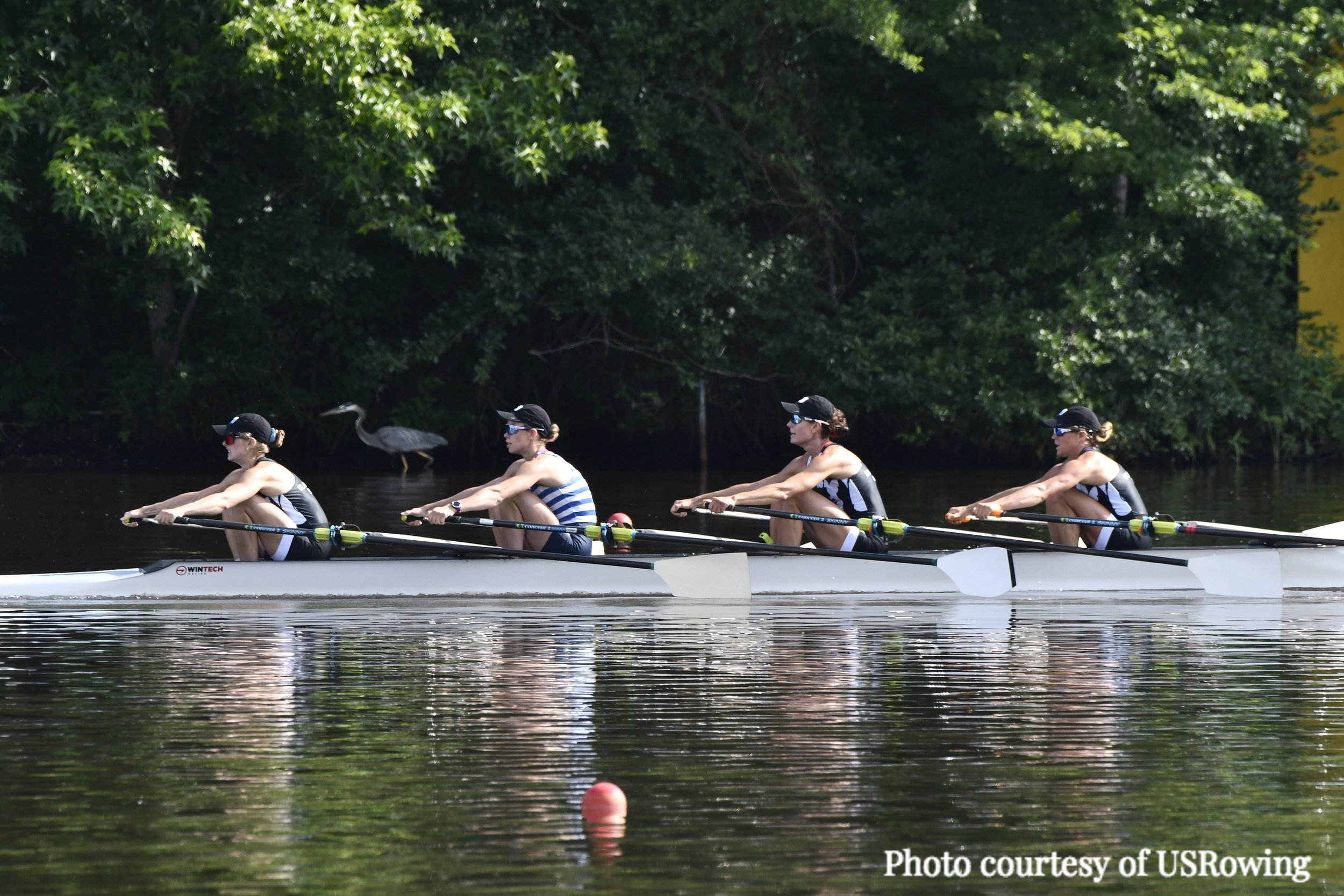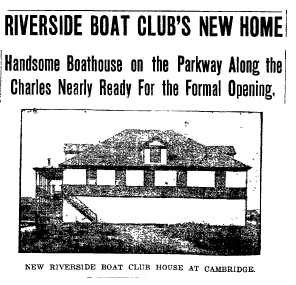How did it all start?
Lisa: I started rowing as an undergraduate at the University of Kansas in 1978. I signed up for rowing because 2 tall, gorgeous men were recruiting during enrollment. The club had no funding and little equipment. The men and women shared a Pocock 8+ from 1936 that was covered with fiberglass and weighed about 400 lbs. The coach was a former coxswain, so he coached from a small boat tethered to the 8+. Later, I bought a Vespoli 1x in 1985 and since I learned how to scull by watching videos of German scullers, I carried my hands right over left for several months. I often had to race against men as there were few women scullers in the Midwest. Despite the dearth of sculling in the Midwest in the 1980s, I was coached briefly by the Canadian rower, Theodore Dubois, and by Miriam Baer from the Minnesota Boat Club.
Jeff: I started rowing in the 9th grade at Poughkeepsie High School in upstate New York. I had been swimming, racing row boats, and mountain climbing since I could walk, so it seemed like a good sport for me. I had been playing the baritone horn in the marching band, but couldn’t do both band and rowing. I think the band director was relieved. I had a scholarship to Syracuse in rowing. I funded my post-collegiate rowing by coaching. I coached at St. Anthony’s High school on Long Island, the Merchant Marine academy at King’s Point, Northeastern University, and MIT as well as a few other places. I also started the rowing program in Albany, NY where Austin Meyer (who finished 4th in the under 23 2x at the world championships this year) learned to row.
Memories…
Lisa: Memorable experiences, both bad and good, make us better. Only 4 months after teaching myself how to scull I entered Women’s nationals in Corning, NY. I drove 22 hours with my old boyfriend in a VW rabbit. The water pump blew out on the way, a tornado wiped out the motel where I planned to stay, and then I raced Ann Marden in my first heat. Many of my fondest memories of rowing at RBC were of training with the sculling group every morning in the 1990s with coaches Jeanne Flannagan (Olympic 8+ silver medalist in 1984) and Iskra Balcheva (Bulgarian Olympian). There was the ever present smell of chocolate Necco wafers in the basin. One year I drove to the Canadian Henley with Jim Hanley and Jamie Ames. Hanley kept rolling up the window when Jamie was trying to spit cherry pits outside. Two of my best memories are rowing with Jeff in a double at the Foot of the Charles on the morning of our wedding and in June of 2009 after his heart surgery. Winning the HOCR in the master’s women’s 1x after starting dead last was rather fun, too. I have started last 3 times.
Jeff: My most memorable experiences of rowing are of racing. I won the San Diego Crew Classic with Andy O’Brien in my boat twice. I raced with John Condon (former RBC president) many times. Rowing with John is always a memorable experience. He had a lot of enthusiasm. Winning 3 gold medals in a row while not getting off the water at the Master World’s in Belgium was really a highlight. I won the 2x, 4-, and 8+. Lisa also reminded me that I met her at the RBC HOCR party after winning the Master’s 8+ at the HOCR. That was definitely a memorable rowing experience.
Coming to Riverside…
Lisa: I rowed with a women’s 4x in 1988 at RBC, but I officially joined RBC in 1989. A couple of other friends from Kansas had joined RBC a year before me and told me that it was a really great club with nice boats, fast rowers, good coaches, and indoor plumbing. I had raced at Canadian Henley a couple of times prior to moving to Boston and many of the winners were wearing the blue and white stripes that I figured it would be a good place for me to learn how to row fast. Since I had to sell my boat when I moved here, Jim Hanley let me use his boat for racing. I am forever in his debt. Folks on the board discovered that I could repair boats and rig, so I worked part time as the rigger.
Jeff: I joined RBC in 1999. I had been coaching several people at MIT including President Igor Belakovskiy. They had joined RBC and I wanted to continue training with fast people so I joined as well. I was working at Gentle Giant and RBC was a good bargain. I could also keep my boat on the lawn. I drove the trailer for a few years for RBC to help with the rowing expenses.
Seriously, Kastle Kunze?
Lisa: I was leaving Boston to start my residency in orthopedic surgery at University of Michigan in 1997. Teddy Littlefield was still the groundskeeper at RBC and although he liked to paint, his efforts often resemble a Jackson Pollock painting. The B&G people would hide the brushes and paint, but he would just buy more. One day I caught him entering the women’s locker room with paint in hand. I stopped him and told him that I was planning on painting the locker room before going to Michigan. I really didn’t want to do that, but I ended up painting the entire locker room and repairing several lockers. In honor and in jest of my deeds, Marianne Ganzer painted the “Kastle Kunze” sign and put it over the locker room. That’s it.
Current Riverside Project…
Lisa: I am working on the Development Committee, and my primary focus is on program development. It is a long term effort, but this year I have spoken with many RBC members and coaches about how to create good programs. My goal is to initiate changes that will improve our programs and make them financially sound. This will take time and money. Some improvements in the program structure, function, and equipment can be made over the next year, but overall, this is a 5-10 year project. I am so appreciative of the people who have helped me up to this point. If you have ideas about how to make programs run better, I would like to hear about them!
It seems like you and Jeff are always on the go no matter the season. Let’s play a game. I’ll give you a date and weather conditions and you tell me where I can find you.
February, 20 degrees, snow, wind: 5 mph
Lisa/Jeff: Biathlon experience at Soldier Hollow. Lisa scores 14/15 and Jeff 8/15. Neither of us can ski for beans, but we had a blast. Later that day we headed to the Olympic venue in Park City and did the bobsled and zip-lined along the ski jumps. Weeeee.
March, 18 degrees, snowing, wind: 30 mph
Lisa/Jeff: Lifting weights at the Murr Center at Harvard and running into the awesome Sarah Schwegman who is also pumping some iron and demonstrating her exceptional balance. (Note: There may have been some bribery associated with this response.)
June, 72 degrees, partly cloudy, wind: 8 mph
Lisa/Jeff: There is no better day to do 2 minute pieces. We welcome others to share our pain.
August, 91 degrees, clear and sunny, 72 degrees, wind: 2 mph
Lisa/Jeff: Paddleboarding at Marblehead! Lobstas for dinner.
October, 48 degrees, cloudy, wind: 12 mph
Lisa/Jeff: Rowing in the HOCR and cheering others on from the dock.
Lisa: I volunteer with the first aid team for the HOCR.
Jeff: I roam the crowds to talk with the some of the hundreds of rowing people from my past.
Lisa: After the races are over we head to the kickin’ RBC party. We first met at one of the parties so it’s one of our anniversaries.

















